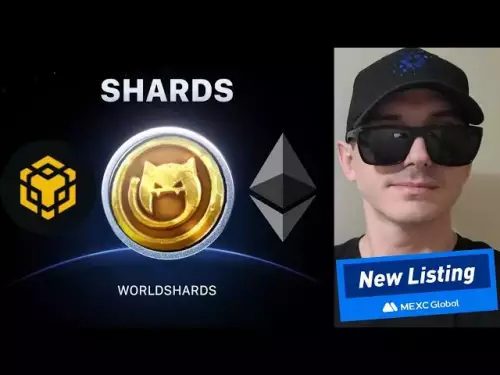-
 Bitcoin
Bitcoin $110000
-1.96% -
 Ethereum
Ethereum $4290
-4.05% -
 Tether USDt
Tether USDt $1.000
0.01% -
 XRP
XRP $2.806
-1.93% -
 BNB
BNB $844.4
-1.88% -
 Solana
Solana $203.5
-3.22% -
 USDC
USDC $0.9999
0.01% -
 Dogecoin
Dogecoin $0.2119
-3.44% -
 TRON
TRON $0.3347
-1.84% -
 Cardano
Cardano $0.8071
-3.99% -
 Chainlink
Chainlink $22.39
-5.73% -
 Hyperliquid
Hyperliquid $45.07
-2.08% -
 Ethena USDe
Ethena USDe $1.001
0.01% -
 Bitcoin Cash
Bitcoin Cash $585.2
-1.91% -
 Sui
Sui $3.250
-3.97% -
 Stellar
Stellar $0.3530
-3.10% -
 Avalanche
Avalanche $24.40
-3.60% -
 Hedera
Hedera $0.2118
-4.15% -
 Cronos
Cronos $0.2643
-4.99% -
 UNUS SED LEO
UNUS SED LEO $9.514
0.10% -
 Litecoin
Litecoin $109.9
-2.51% -
 Toncoin
Toncoin $3.095
-2.26% -
 Shiba Inu
Shiba Inu $0.00001206
-3.89% -
 Polkadot
Polkadot $3.751
-3.35% -
 Uniswap
Uniswap $9.214
-5.03% -
 Dai
Dai $0.9999
-0.01% -
 Monero
Monero $268.5
-0.59% -
 Aave
Aave $308.8
-5.24% -
 Bitget Token
Bitget Token $4.810
-3.43% -
 World Liberty Financial
World Liberty Financial $0.1765
-19.97%
What is an "NFT whitelist" or "allowlist"?
An NFT whitelist grants select wallets early minting access, often at a discount, rewarding community engagement while helping projects build hype and loyalty.
Sep 03, 2025 at 12:18 pm
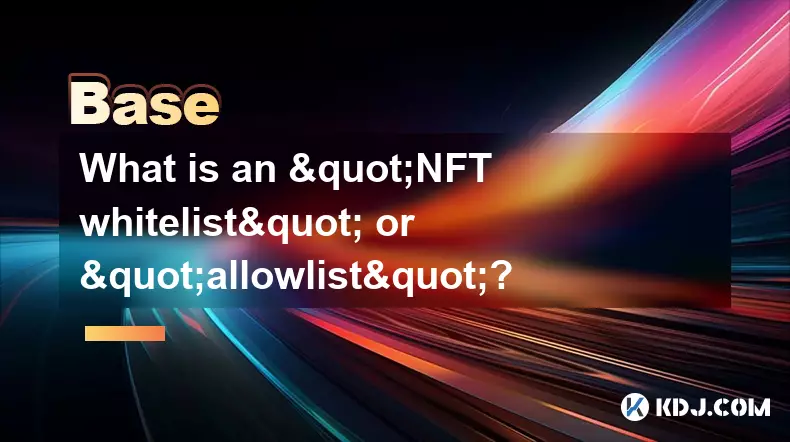
Understanding NFT Whitelists and Allowlists
1. An NFT whitelist, also commonly referred to as an allowlist, is a curated list of cryptocurrency wallet addresses granted special access during an NFT project’s minting phase. These selected addresses are typically given the privilege to mint NFTs before the general public, often at a reduced price or with lower gas fees. Projects use whitelists to reward early supporters, community members, or participants in specific promotional activities.
2. Whitelisting serves as a strategic tool for NFT creators aiming to foster engagement and loyalty. By offering early access, projects incentivize users to participate in social media campaigns, join Discord servers, or complete certain tasks. This not only boosts visibility but also helps build a dedicated community around the collection before its official launch.
3. The mechanics of a whitelist vary between projects, but the core principle remains consistent: verified wallet addresses receive a unique minting link or code. This link allows them to purchase a predetermined number of NFTs during a specified timeframe. Once the whitelist mint concludes, the remaining tokens are usually released to the public in a standard sale.
4. Some projects implement tiered whitelists, where different levels of access correspond to varying benefits. For example, top contributors might receive multiple mints or discounted rates, while basic participants get a single mint at standard whitelist pricing. This tiered approach encourages deeper involvement and rewards active community members.
5. It is important to note that being on a whitelist does not guarantee the acquisition of a rare or high-value NFT. While early access improves chances, the actual distribution of traits and rarities still depends on the project’s randomization process during minting. Participants should remain cautious of scams, as fraudulent projects often impersonate legitimate ones to collect personal information or funds.
How to Get Whitelisted for an NFT Project
1. Active participation in a project’s official Discord server is one of the most common ways to earn a spot on a whitelist. Many teams host events such as art contests, trivia games, or referral challenges exclusively for server members. Completing these tasks demonstrates genuine interest and increases the likelihood of being selected.
2. Engaging with the project on social media platforms like Twitter and Instagram can also contribute to whitelist eligibility. Projects frequently ask participants to retweet announcements, tag friends, or share creative content using a specific hashtag. These actions help amplify reach and identify enthusiastic supporters.
3. Some NFT collections require users to hold specific tokens or NFTs from related projects to qualify. This method, known as proof-of-hold, ensures that only those already invested in the ecosystem gain early access. For instance, owning a Bored Ape might grant whitelist spots for spin-off collections.
4. A growing number of projects utilize dedicated platforms to manage whitelist entries. Users register through these portals, complete assigned tasks, and receive confirmation if selected. These systems streamline the process and reduce the risk of manipulation or fake entries.
5. Transparency is crucial when applying for a whitelist. Legitimate projects clearly outline their criteria and timelines. Any request for private keys or direct transfers of cryptocurrency should be treated as a red flag. Genuine whitelist processes never require users to send funds to secure a spot.
Risks and Considerations with NFT Whitelists
1. The popularity of whitelists has led to an increase in phishing attempts and impersonation scams. Fraudsters create fake websites or Discord channels mimicking real projects to collect wallet information. Users must verify all communication channels through official sources before engaging.
2. Never share your seed phrase or sign suspicious transactions. Scammers often present fake whitelist forms that, when signed, grant them full access to your wallet. Always double-check URLs and ensure you are interacting with the authentic project team.
3. Even with a whitelist spot, there is no assurance of profit. The NFT market is highly volatile, and many projects fail to gain traction post-launch. Participants should evaluate the team, roadmap, and utility of a collection rather than relying solely on early access as a financial strategy.
4. Gas wars can still occur during whitelist mints, especially for high-demand projects. Despite having early access, users may face network congestion and inflated transaction fees. Planning ahead and setting appropriate gas limits can help mitigate these issues.
5. Some projects cancel or delay whitelist mints due to technical difficulties or security concerns. Holding a whitelist spot does not constitute ownership until the NFT is successfully minted and transferred to your wallet. Staying informed through official updates is essential to avoid disappointment.
Frequently Asked Questions
What is the difference between a whitelist and a public mint?A whitelist allows pre-approved wallets to mint NFTs before the public sale, often at a lower price or with guaranteed access. The public mint is open to anyone but may involve higher competition and gas fees due to demand.
Can I sell my whitelist spot?While some secondary markets list whitelist spots for sale, most legitimate projects prohibit transferring whitelist rights. Doing so may result in disqualification or blacklisting. Always review the project’s terms before attempting to trade access.
Do all NFT projects use whitelists?No, not all projects implement whitelists. Some opt for Dutch auctions, public lotteries, or free mints to distribute tokens. The choice depends on the team’s strategy for community building and token distribution.
What happens if I miss the whitelist mint window?If you fail to mint during the designated timeframe, your whitelist access typically expires. Any remaining NFTs are usually released in the public sale. Checking the project’s schedule and setting reminders can help avoid missing the opportunity.
Disclaimer:info@kdj.com
The information provided is not trading advice. kdj.com does not assume any responsibility for any investments made based on the information provided in this article. Cryptocurrencies are highly volatile and it is highly recommended that you invest with caution after thorough research!
If you believe that the content used on this website infringes your copyright, please contact us immediately (info@kdj.com) and we will delete it promptly.
- DeFi's Wild West: Token Governance and Market Manipulation Under Scrutiny
- 2025-09-05 04:45:14
- MAGACOIN: The Retail Favorite Crypto Presale Taking 2025 by Storm
- 2025-09-05 04:25:13
- Arctic Pablo Coin, Pudgy Penguins, Mog Coin, and Avalanche: Navigating the Meme Coin Mania in NYC
- 2025-09-05 02:45:17
- Bitcoin Buying Spree: Whales, Unlocks, and Market Impact - What's Next?
- 2025-09-05 02:25:15
- BlockchainFX: Your Ticket to Crypto Investment and Passive Income Nirvana
- 2025-09-05 03:05:12
- Cryptos to Explode in Late 2025: Meme Coins, DeFi, and More!
- 2025-09-05 03:45:14
Related knowledge

What is "backtesting" a crypto trading strategy?
Sep 03,2025 at 10:55am
Understanding Backtesting in Crypto TradingBacktesting is the process of evaluating a trading strategy by applying it to historical market data. Trade...

What is a "crypto trading bot" and do they work?
Sep 02,2025 at 04:19pm
Understanding Crypto Trading Bots1. A crypto trading bot is a software application designed to automate the process of buying and selling cryptocurren...

What is a "copy trading" platform?
Sep 02,2025 at 07:00pm
Understanding Copy Trading in the Cryptocurrency Space1. A copy trading platform allows users to automatically replicate the trades of experienced inv...
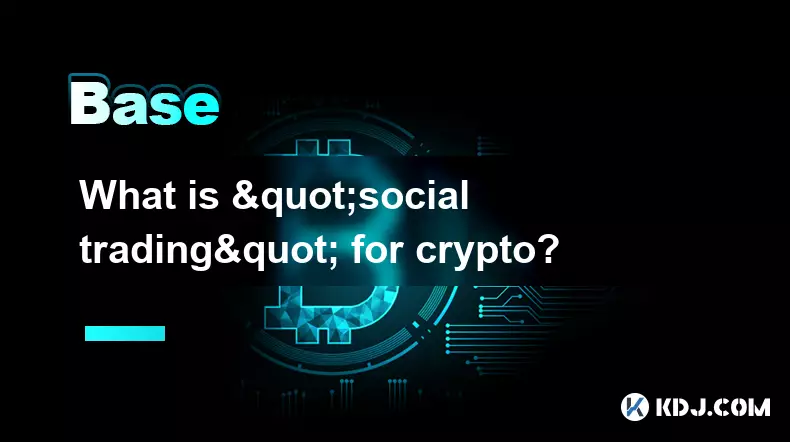
What is "social trading" for crypto?
Sep 03,2025 at 09:00pm
Understanding Social Trading in the Cryptocurrency Space1. Social trading refers to a method where investors observe, follow, and automatically replic...
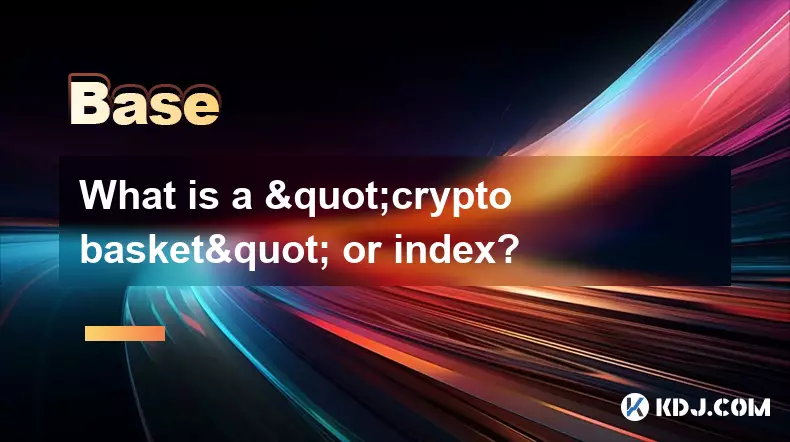
What is a "crypto basket" or index?
Sep 03,2025 at 07:01am
Understanding Crypto Baskets and Their Role in Digital Asset Investment1. A crypto basket refers to a curated collection of multiple cryptocurrencies ...
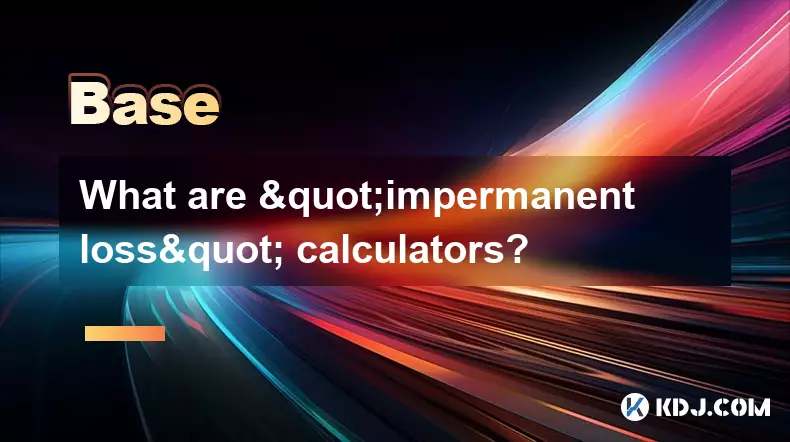
What are "impermanent loss" calculators?
Sep 03,2025 at 12:00pm
Understanding Impermanent Loss in Decentralized Finance1. Impermanent loss is a phenomenon that affects liquidity providers in decentralized exchanges...

What is "backtesting" a crypto trading strategy?
Sep 03,2025 at 10:55am
Understanding Backtesting in Crypto TradingBacktesting is the process of evaluating a trading strategy by applying it to historical market data. Trade...

What is a "crypto trading bot" and do they work?
Sep 02,2025 at 04:19pm
Understanding Crypto Trading Bots1. A crypto trading bot is a software application designed to automate the process of buying and selling cryptocurren...

What is a "copy trading" platform?
Sep 02,2025 at 07:00pm
Understanding Copy Trading in the Cryptocurrency Space1. A copy trading platform allows users to automatically replicate the trades of experienced inv...

What is "social trading" for crypto?
Sep 03,2025 at 09:00pm
Understanding Social Trading in the Cryptocurrency Space1. Social trading refers to a method where investors observe, follow, and automatically replic...

What is a "crypto basket" or index?
Sep 03,2025 at 07:01am
Understanding Crypto Baskets and Their Role in Digital Asset Investment1. A crypto basket refers to a curated collection of multiple cryptocurrencies ...

What are "impermanent loss" calculators?
Sep 03,2025 at 12:00pm
Understanding Impermanent Loss in Decentralized Finance1. Impermanent loss is a phenomenon that affects liquidity providers in decentralized exchanges...
See all articles























